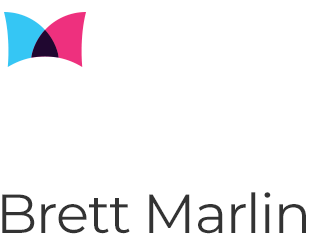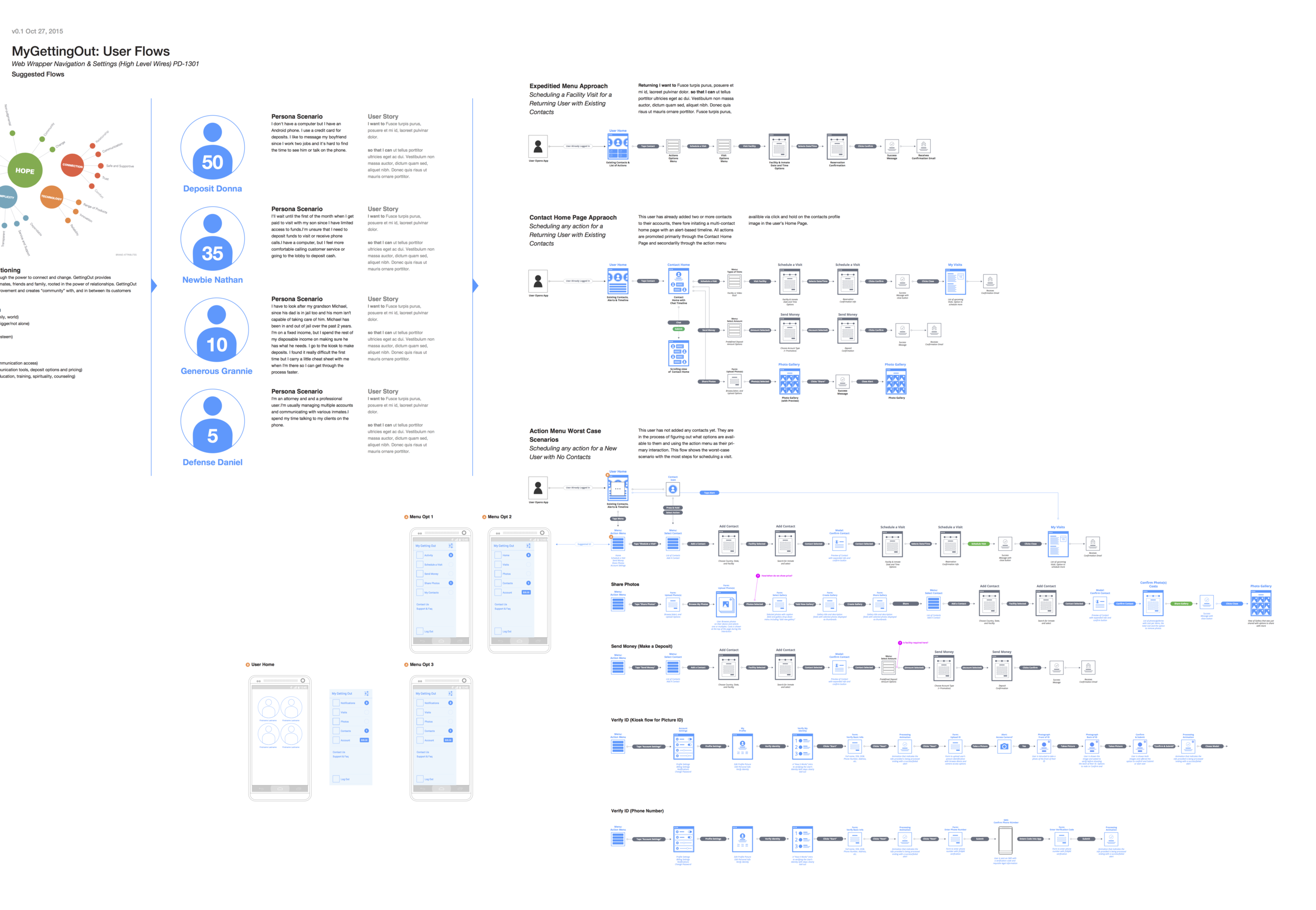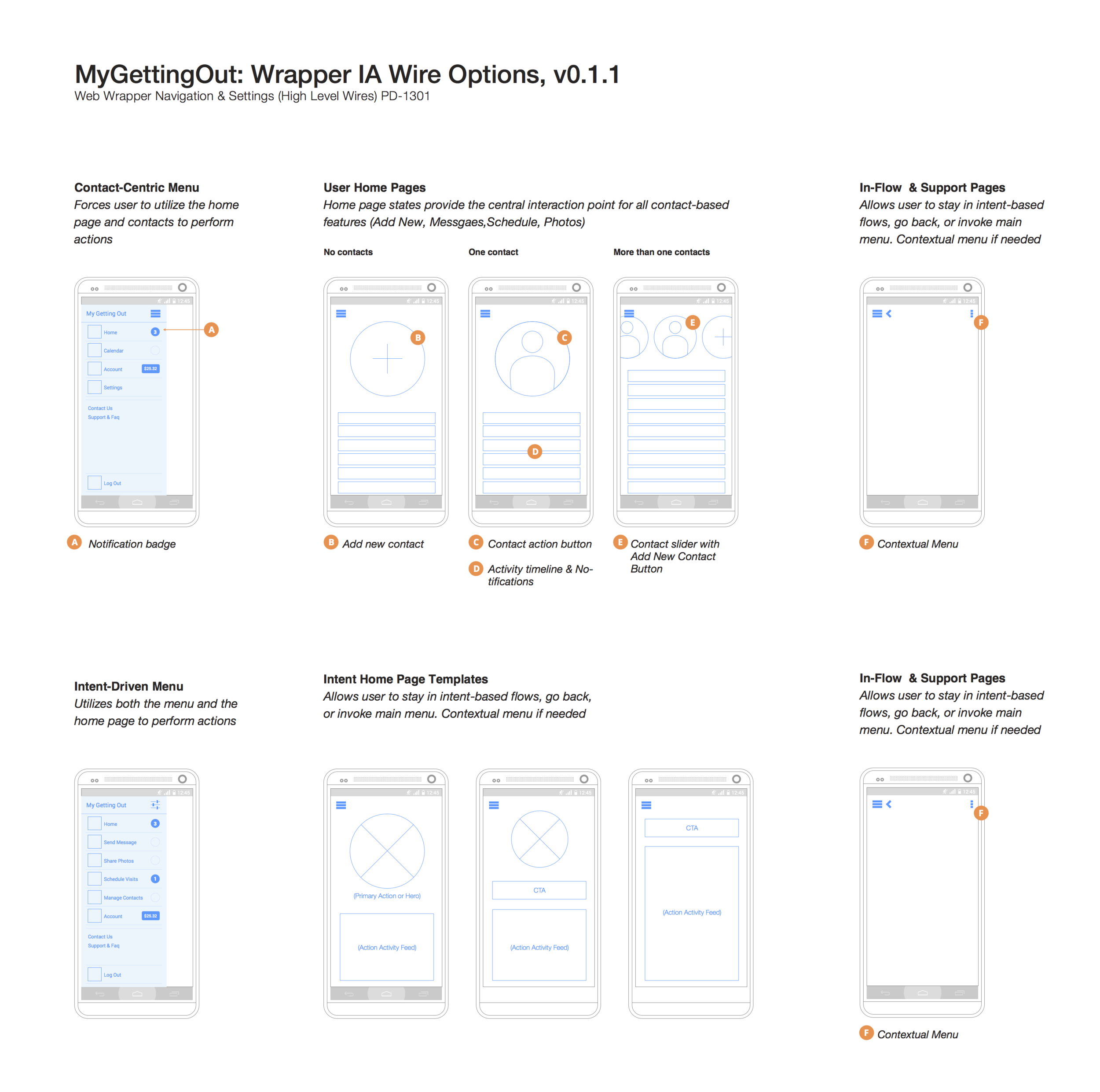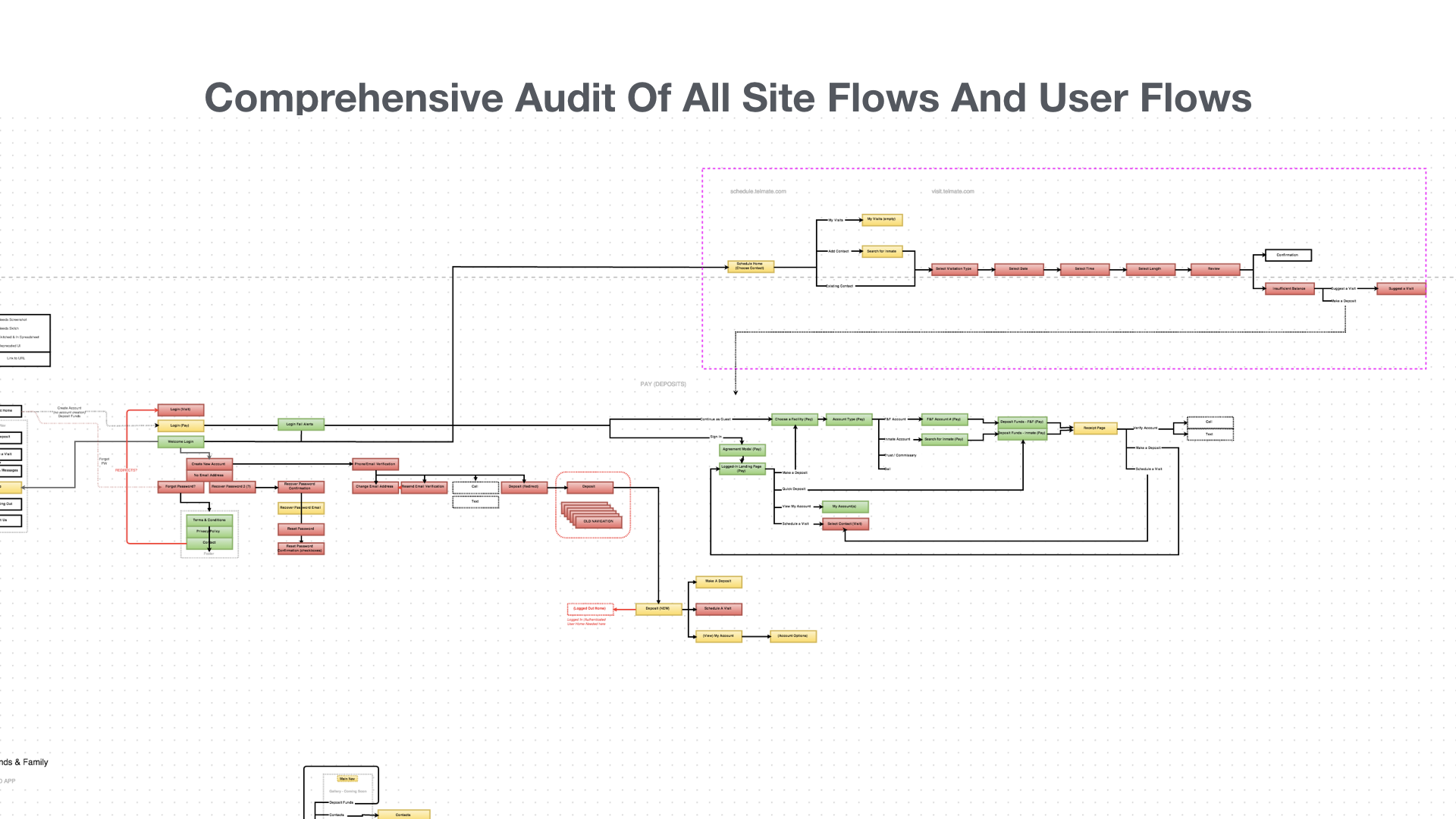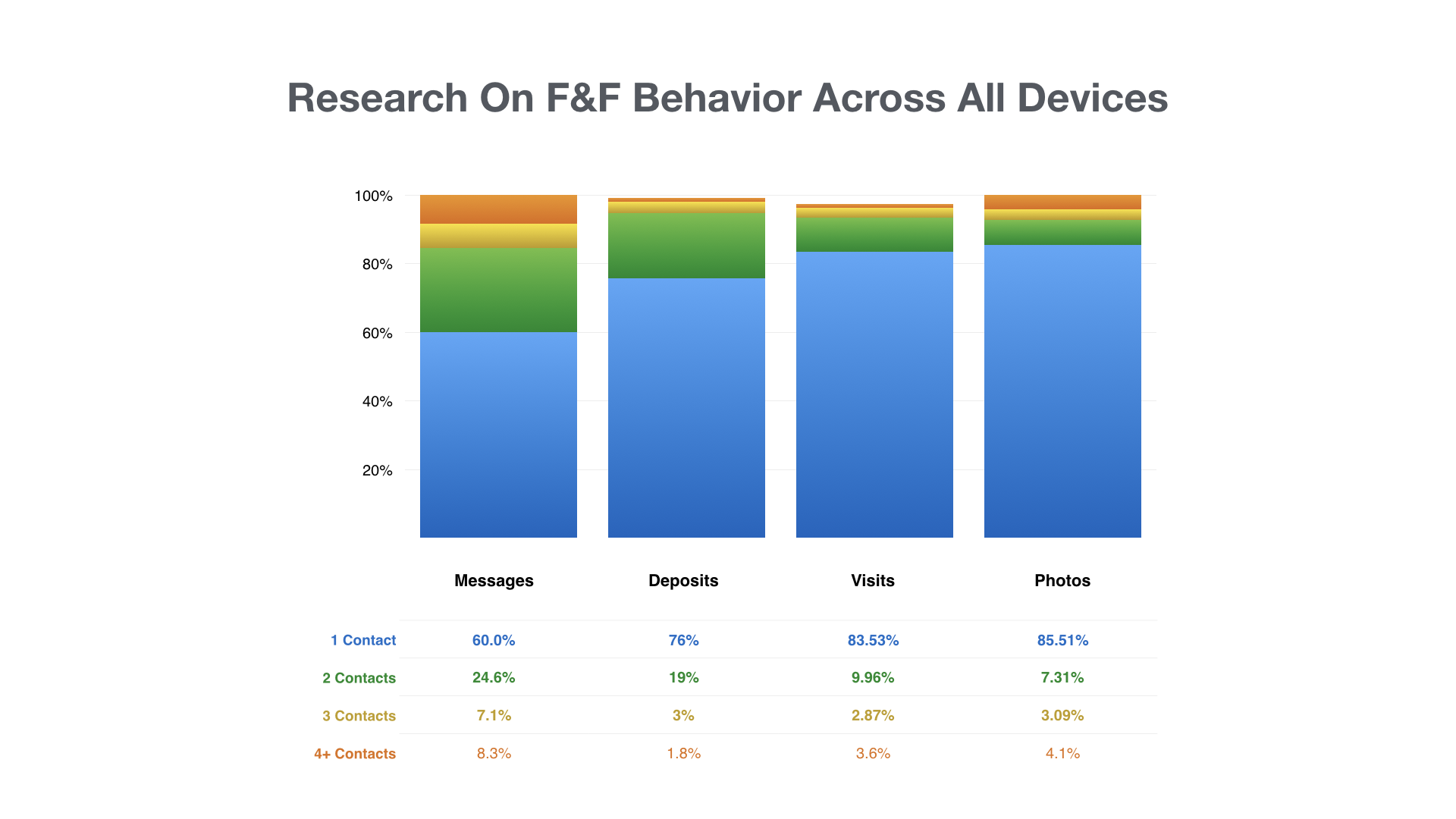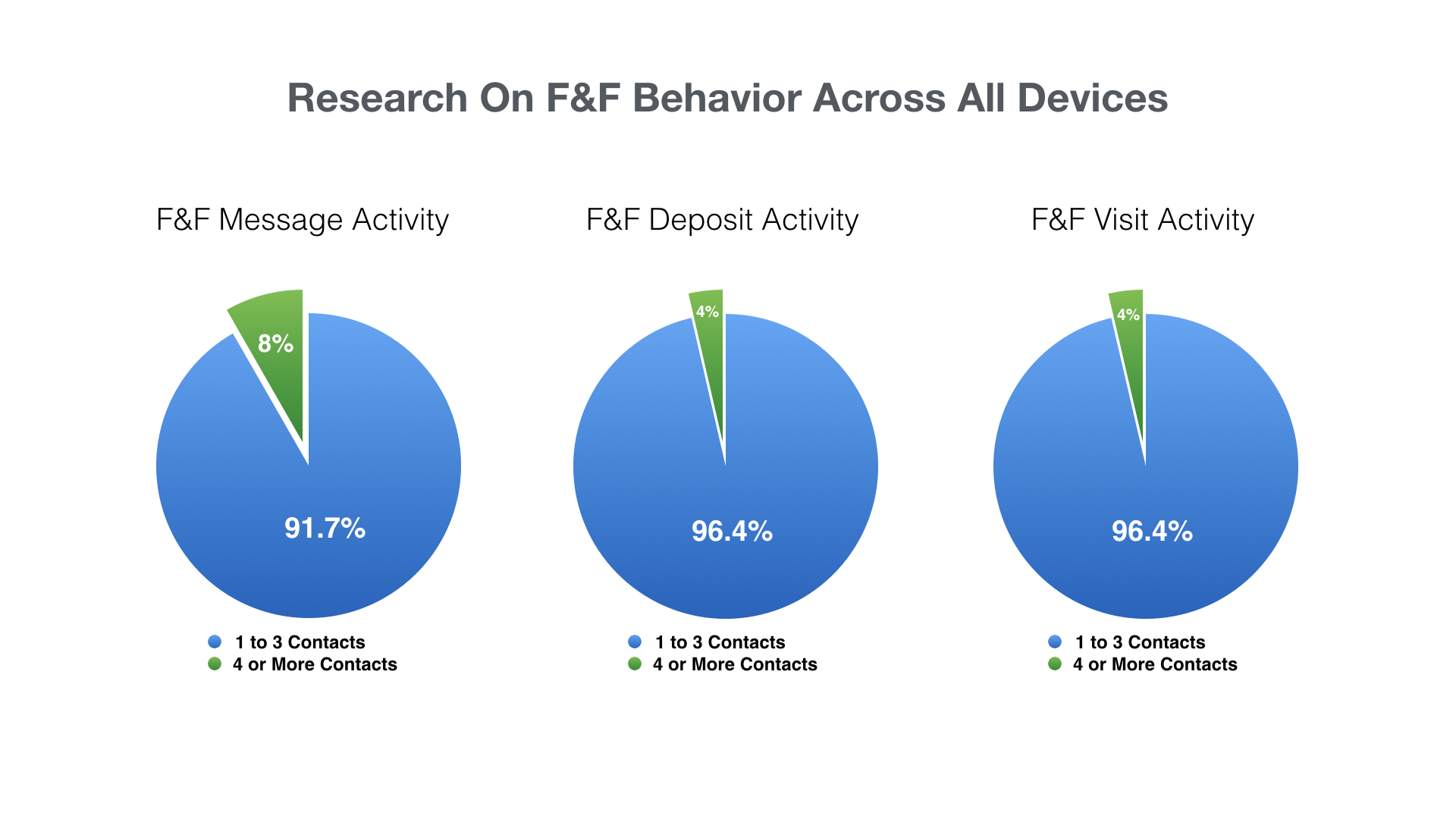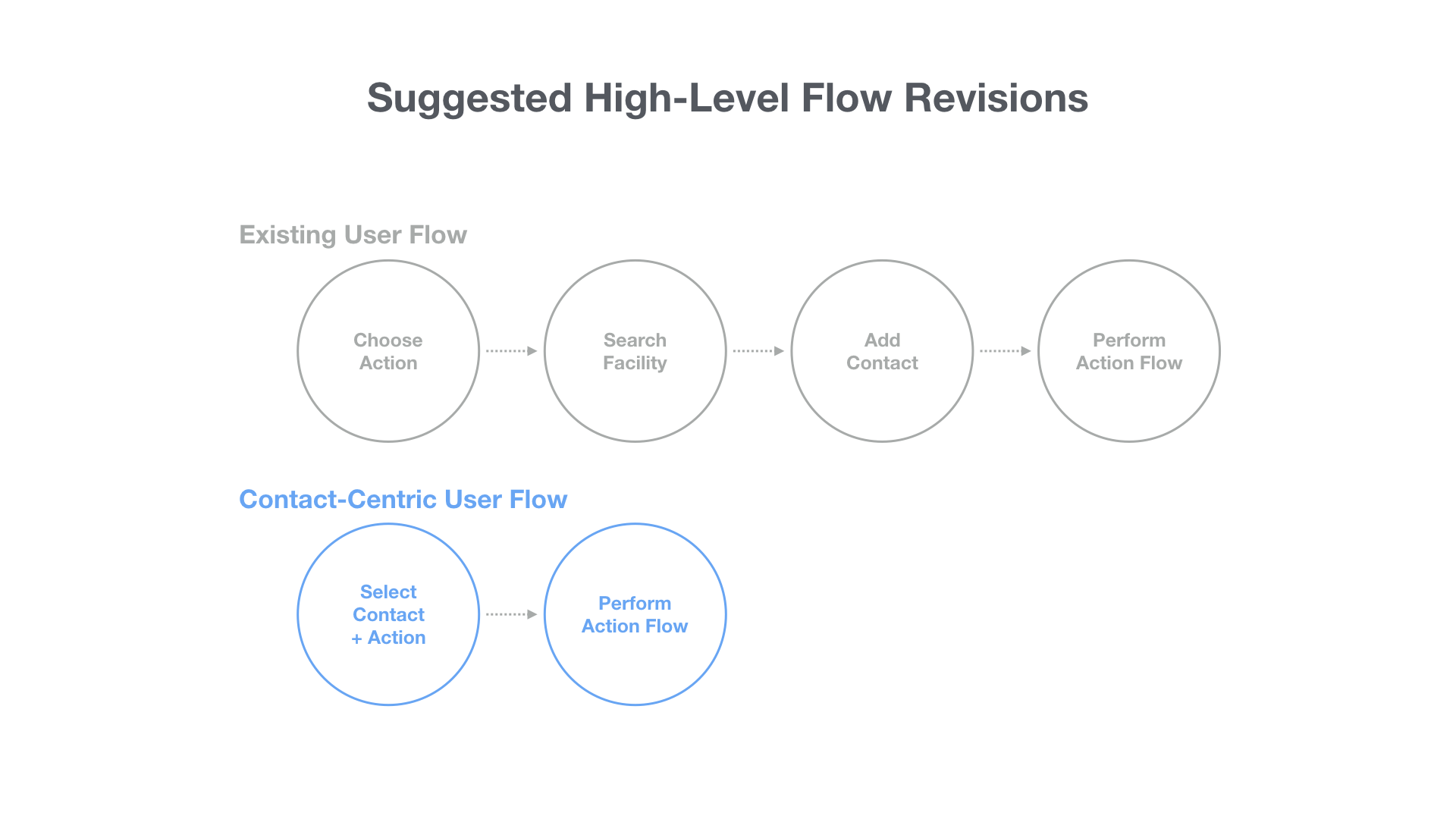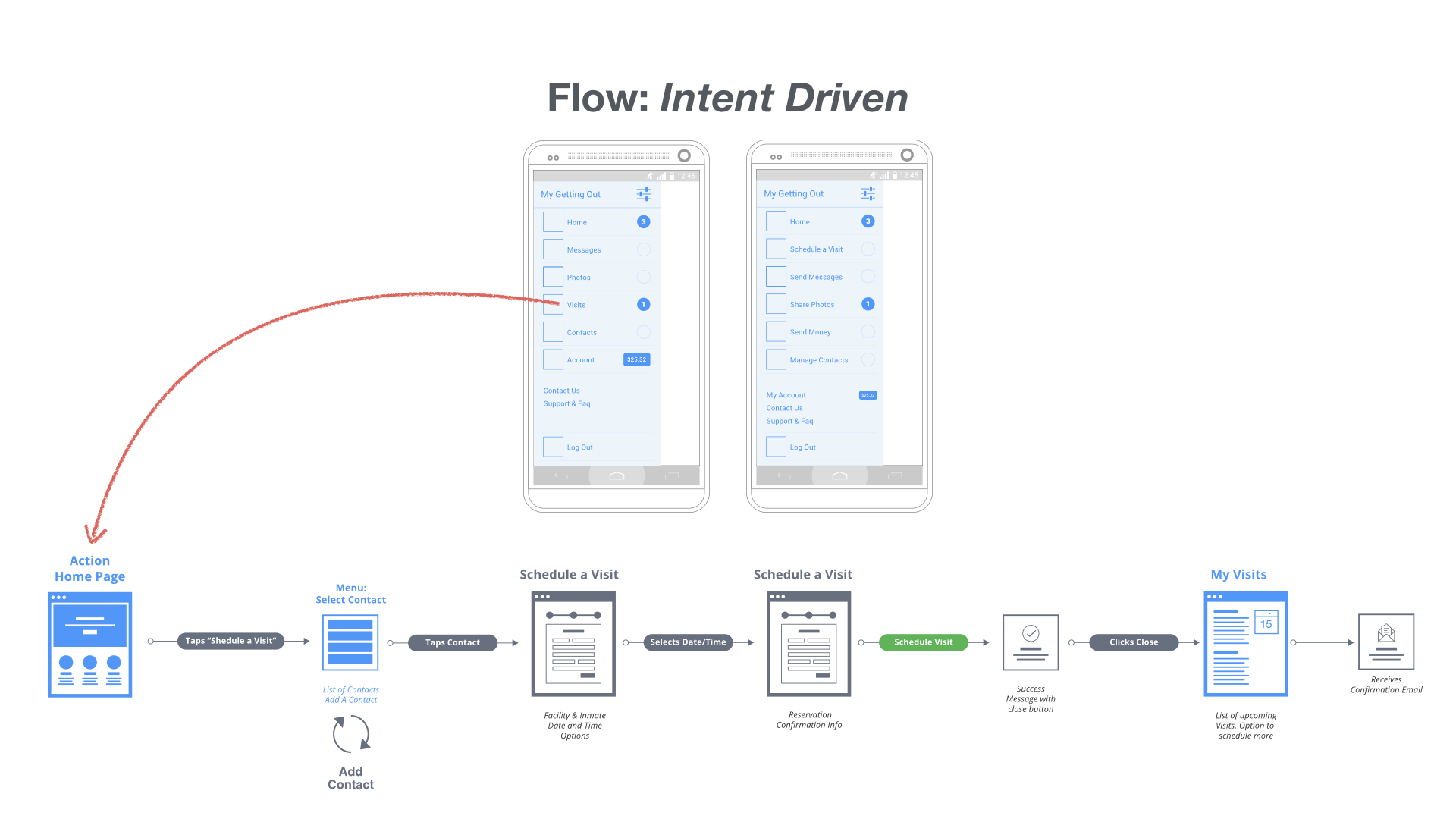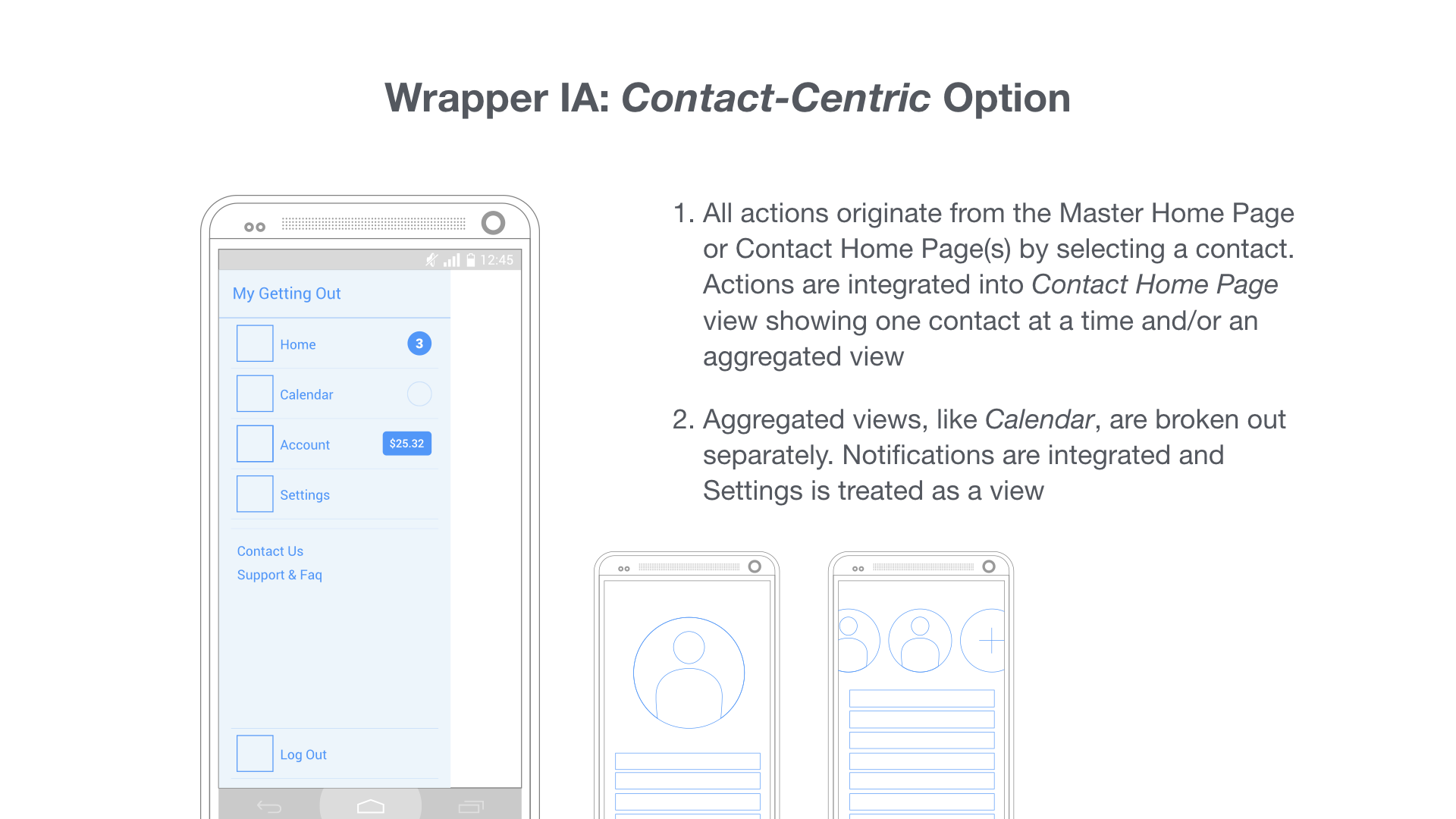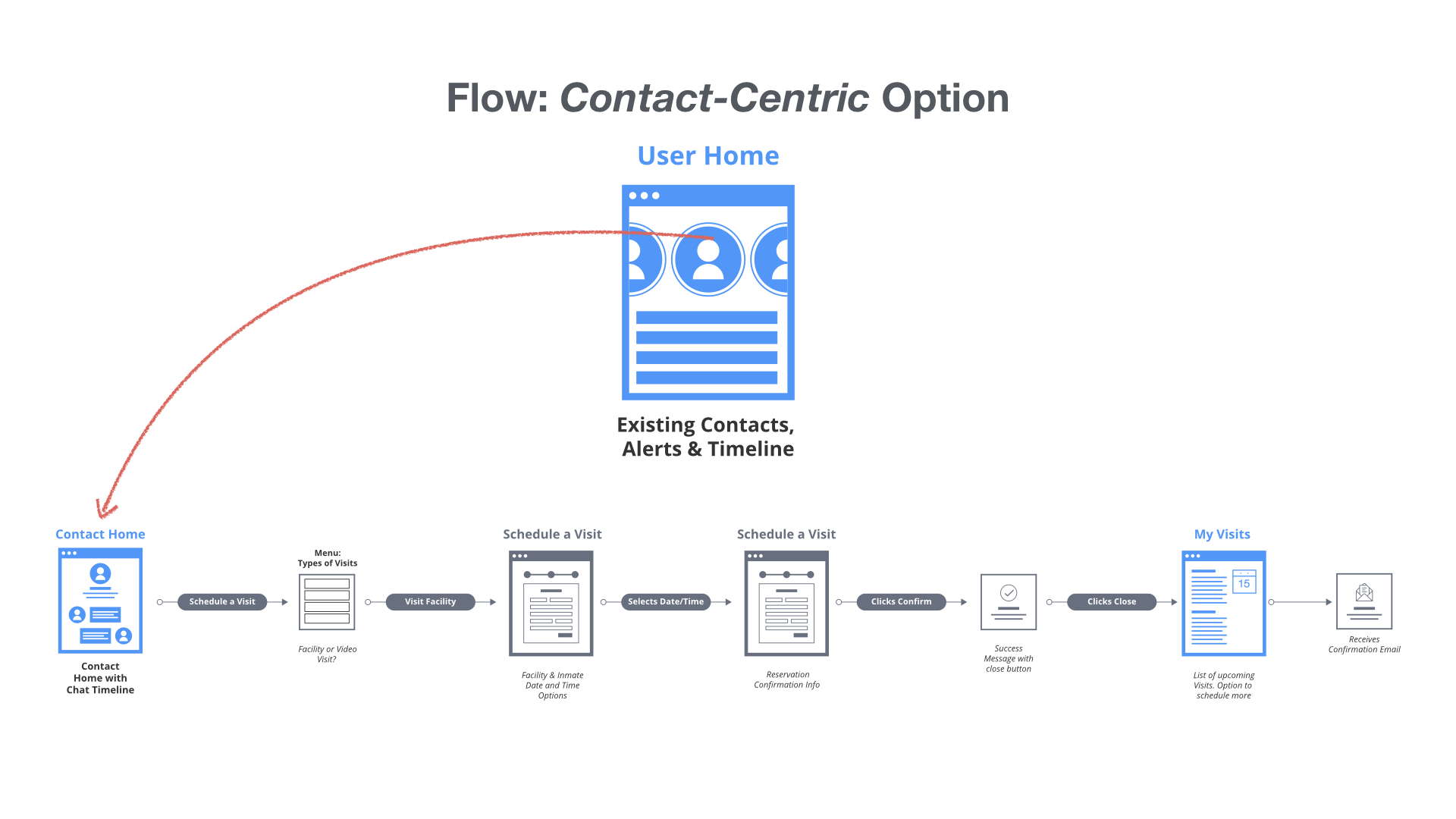“Conversions have plateaued at our kiosks and are declining in mobile and web apps. We need to consolidate user experiences across devices and unify behavioral data so that we can enable better insights. ”
My Role
Role: UX Director (5 Members)
Role: UX Designer
Reported to: Chief Marketing Officer
Overview
Telmate's tablets and software for inmates is purchased by their friends and family who have access to funds. It's an interesting challenge to promote services to one user and leverage that user's influence on another to purchase on their behalf. That challenge was compounded by a fractured experience over a varied landscape of devices for both personas including kiosks for inmates, kiosks for family, mobile apps, tablet apps, desktop websites, and phone (IVR).
My team was responsible for defining the unification strategy by working with multiple development teams, legal, reporting, marketing and leadership.
Sample from the exhustive audit of all user flows accross all devices
Problem
Over the years Telmate had evolved from a telecom company into a technology company, primarily led by engineers without design input. The result was a fragmented user experience across all touch-points that frustrated end users and data analyst alike.
A collective hypothesis was that the resulting friction caused by both the fragmentation and poorly designed user flows was resulting in lackluster revenue performance. Therefore, we set out to determine a unification strategy, including a redesign of key adoption events like onboarding, to remove friction and deliver better data.
Process
After absorbing as much of the business problem as possible, I recruited my researcher and another designer help me execute:
- Comprehensive audit of user flows across all devices
- Consolidation of behavioral data from available resources
- Normalization of collected data
- Secondary research sprint on all collected data
- Scheduled on-site user interviews with inmates and Friends and Family (F&F) users
- Participatory design sessions with stakeholders and some users
Solution
My team's solution leveraged many discoveries from both primary interviews and secondary behavioral research, primarily:
- F&F users rarely use anything other than the payments feature
- Majority of interactions are 1-to-1 and 95% of interactions are with 3 contacts or less for both users (F&F and inmates)
- Inmates did not know that they could request money from F&F
We explored many options as a team, designing together in whiteboard sessions and capturing a more defined solution through paired design contributions. I worked closely with my team by providing hands-on design that unified our recommendations into presentations to stakeholders. These recommendations were:
- Redesign the primary navigation for all touch points to be intent-driven instead of contact centric
- Reflow payments, visits, and messages by originating with previous contacts
- Focus on events like onboarding and sign-in to prompt inmate users to add contacts linking them to payments
